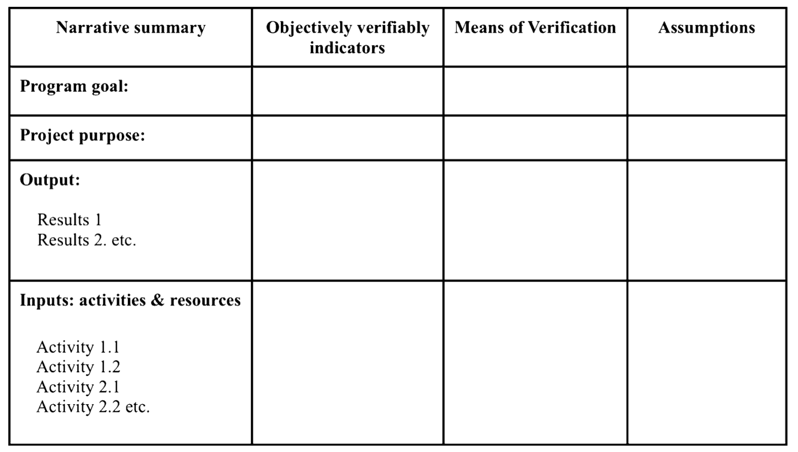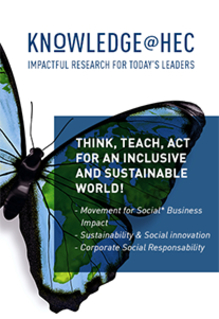What is the Logical Framework?
The Logical Framework is a tool commonly used in international development to plan and evaluate development projects. It is essentially a 4 x 4 matrix [see figure] that was developed for the US Agency for International Development (USAID) in 1969.
Since then, it has become ubiquitous in international development. For some, it became the language of international development. Bilateral development agencies such as the German Corporation for International Cooperation GmbH (GIZ) and the UK’s department for international development; multilateral agencies such as the World Bank and the United Nations Development Project (UNDP); International NGOs such as OXFAM and CARE; and countless local development NGOs throughout the world, have used at one time or another a version of the Logical Framework to plan and evaluate their projects.
How do managerial traditions inform development projects?
Our point of departure is that performance management tools are not neutral. They are imbued with all sorts of traditions. We examine the traditions implicated in one such management tool, the Logical Framework, by considering its visual design. We trace how system theory, management by objectives, and experimental science, which were fashionable in some management circles in the 1960s, are visually articulated in the Logical Framework. The matrix’s different parts are informed by these traditions’ principles: causal thinking, objective/goal-based thinking, system-based thinking, scientific management, etc. Through its matrix, the Logical Framework provides users with visual instructions on how to engage with it along these 1960s traditions.
This is important because while these management traditions informed the Logical Frameworks’ design, they also provide a standardized way of seeing, representing, and intervening in international development. They inform how projects are formulated, operationalized, and how beneficiaries around the world are intervened in the name of development.
The “logical framework” used to plan and evaluate projects, is imbued with management traditions, and thus provides a standardized way of intervening in the world, occluding alternative approaches to management.
So, what are the implications for development projects?
Access to land and food security, for example, implicates all sorts of local and international economic, climatic, cultural, social, and political factors affecting one another. The local NGO, required by its international funders to use the Logical Framework, is often bound to plan and report causal, measurable, and objective-based development interventions that exclude that which is not readily measurable. The Logical Framework renders land and food security development interventions as a 1960s-informed managerial issue. One can’t add much nuance to its 4 x 4 iron cage—there is literarily no space for it in the matrix.
An implication is that while these rational, managerial, scientific traditions inform ways of seeing and intervening in the world, they also occlude alternative visions and approaches to management.
The local NGO, required by its international funders to use the Logical Framework, is often bound to plan and report causal, measurable, and objective-based development interventions that exclude that which is not readily measurable.
Alternative visualizations might account for these other factors, and include political groupings, power dynamics, and socio-political effects. (Although we are currently investigating how NGOs sneak politics and social movement aspirations it.)
The matrix, but also the list and the rank, is a visual instrument that arranges thought and the world in a certain way. Matrices are powerful and we find them in all sorts of performance management tools such as the Balanced Scorecard, Risk Maps, and the Logical Framework. By studying the traditions that inform the Logical Framework matrix we get insight into its power and the type of international development it makes possible.









